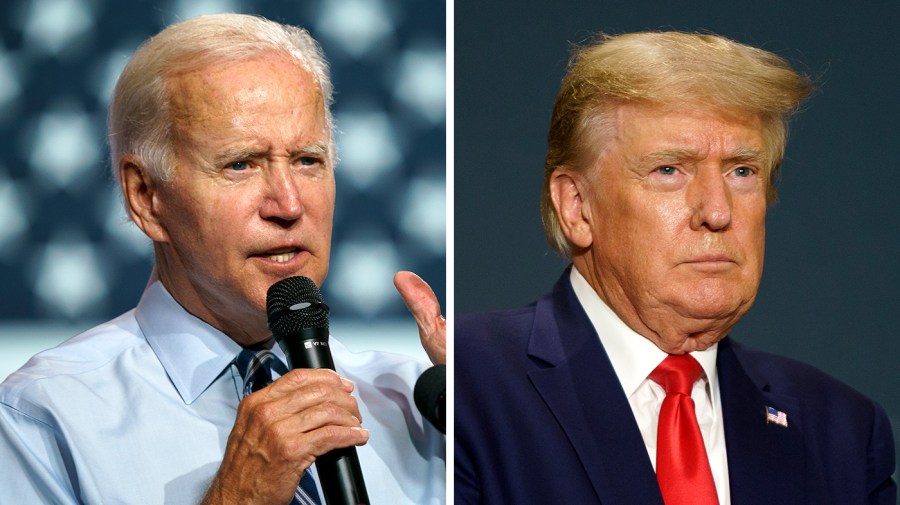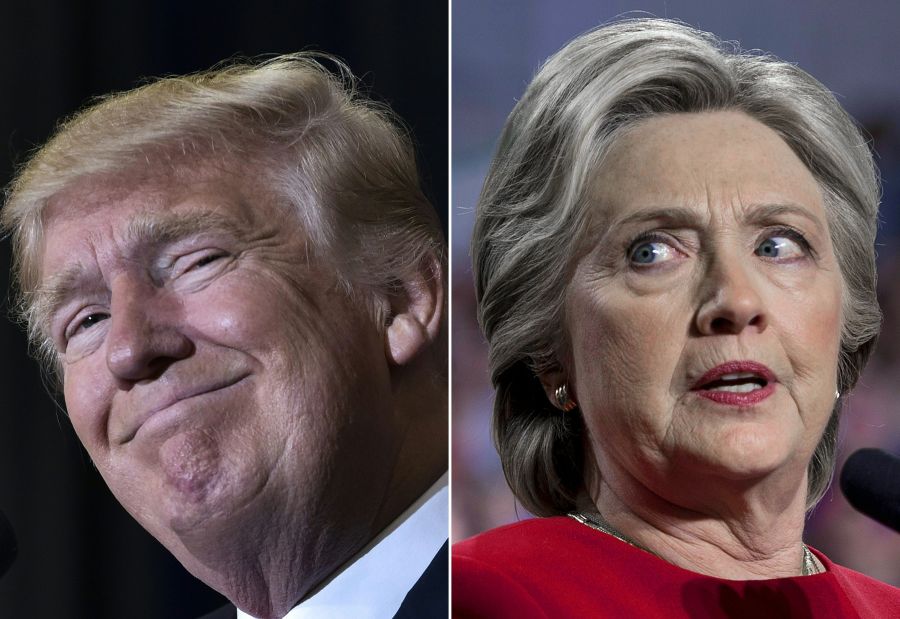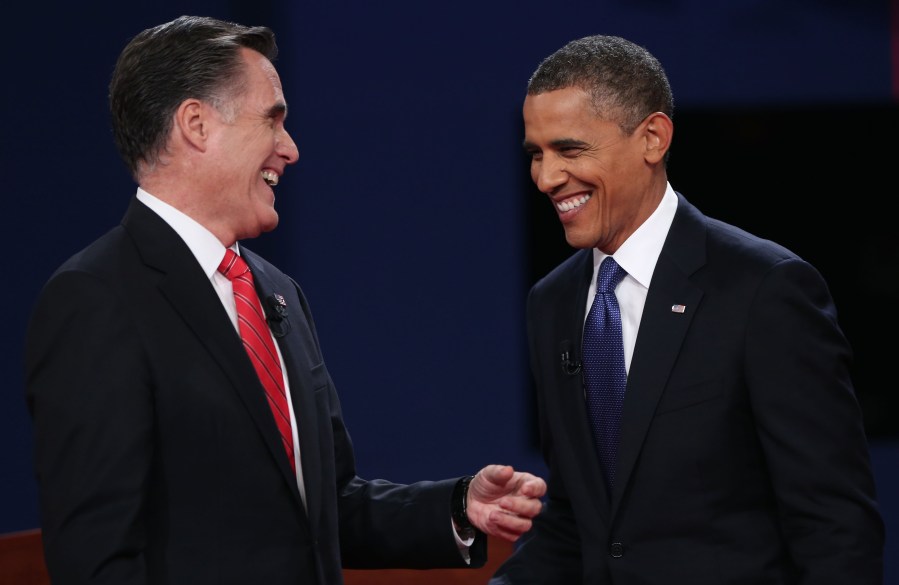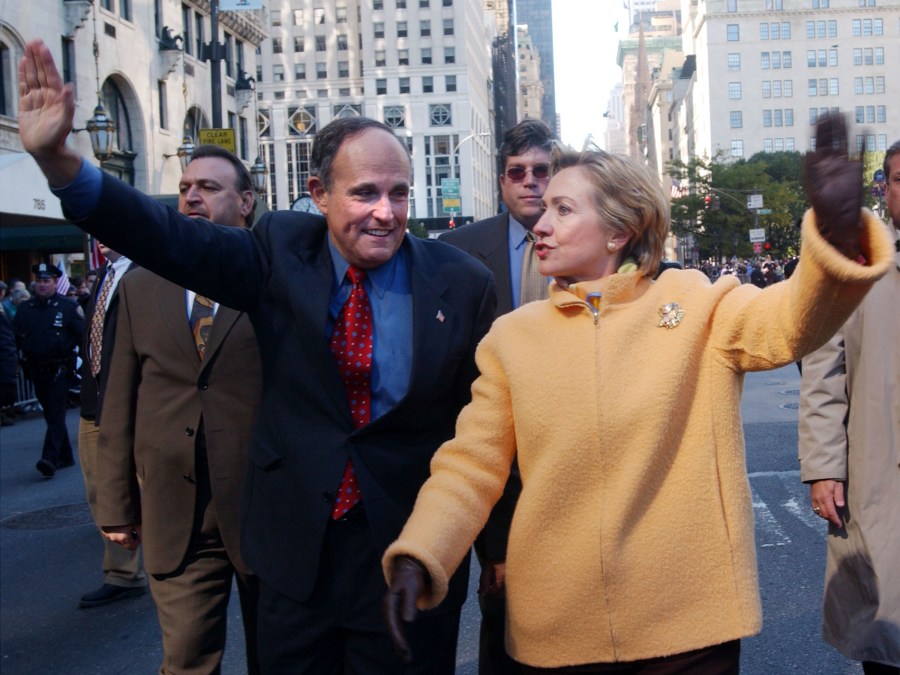(NewsNation) — The 2024 presidential election is still more than 450 days away, but if history is any indicator, it’s better to be ahead of the pack early on.
The front-runner at this point in the race has gone on to win their party’s nomination two-thirds of the time since 2000, a NewsNation analysis found.
That will come as welcome news for former President Donald Trump, who currently holds a substantial lead over his Republican opponents and is polling around 54%. Florida Gov. Ron DeSantis is a distant second with about 15% support. Several of the candidates are hoping to move up in the polls during their visits to the Iowa State Fair this weekend.
But early front-runners have also fallen off over the years, sometimes in dramatic fashion — just ask Rudy Giuliani in 2008.
Here’s who would’ve been each major party’s presidential nominee based on national polls the summer before primary season. When applicable, incumbents were considered their party’s presumptive nominee.
2020

GOP
Incumbent: Donald Trump
Democrat
Leader in August 2019: Joe Biden
Eventual nominee: Joe Biden
How close was it?
After announcing his candidacy in April 2019, most national polls showed then-former Vice President Joe Biden at the front of the pack. By August, he was polling around 30% with Vermont Sen. Bernie Sanders and Massachusetts Sen. Elizabeth Warren competing for second, each at about 15%.
The race became much closer in the fall with Warren leading in a few October polls. By mid-February, the outlook was even worse for Biden when Sanders opened up a 10-point lead. Despite underperforming in the early primaries, Biden was able to shatter expectations on Super Tuesday and eventually went on to secure the Democratic nomination. He later defeated Trump on Election Day.
2016

GOP
Leader in August 2015: Donald Trump
Eventual nominee: Donald Trump
How close was it?
Former Florida Gov. Jeb Bush led for a few weeks in late June, but by late July, Trump had surged ahead.
In early August, the New York City real estate mogul was polling above 20% among registered Republicans with Bush in second. By the end of the month, retired neurosurgeon Ben Carson had overtaken Bush.
Carson briefly closed the gap with Trump for a few weeks in November before eventually fading. After that, Texas Sen. Ted Cruz was the only other person who came close to Trump in national polls.
In March 2016, Cruz was within three points of the former president, according to at least one poll. But that margin was short-lived, and Trump pushed ahead in the subsequent weeks, eventually winning the nomination and the White House.
Democrat
Leader in August 2015: Hillary Clinton
Eventual nominee: Hillary Clinton
How close was it?
The former secretary of state held a commanding lead throughout the summer of 2015, polling above 50% for most of July and into August. Sanders was the only other serious challenger, with about 20% support among Democrats at that point.
The race became much closer as the primary season progressed, and for a few weeks in April 2016, Clinton and Sanders were within a few points of each other. After securing a string of victories in the Northeast, Clinton pulled away and went on to become the first woman to top a major-party ticket before losing to Trump in November.
2012

GOP
Leader in August 2011: Mitt Romney
Eventual nominee: Mitt Romney
How close was it?
Romney led the GOP field for most of the 2011 summer, polling around 25% in July, although that support waned heading into the fall.
By September, then-Texas Gov. Rick Perry had taken the lead. A few months later, polls showed former House Speaker Newt Gingrich in front. Former Pennsylvania Sen. Rick Santorum surged ahead briefly in some polls in February 2012 before Romney regained the lead and secured the GOP nomination. He eventually lost the general election to President Barack Obama.
Democrat
Incumbent: Barack Obama
2008

GOP
Leader in August 2007: Rudy Giuliani
Eventual nominee: John McCain
How close was it?
The former New York City mayor was the GOP front-runner for all of 2007, polling near 30% in August. His next closest competitor at that point was Fred Thompson, a former U.S. senator from Tennessee, at 20%. The party’s eventual nominee, Arizona Sen. John McCain, was in third place during the summer and had even slipped to fourth by the end of August.
Despite raising a significant amount of money, Giuliani underperformed in early primaries and instead pinned his hopes on larger states like Florida. That strategy proved to be a mistake, and Giuliani finished a distant third in the Sunshine State. He dropped out of the race shortly thereafter.
McCain went on to win the nomination before losing to Obama in the general election.
Democrat
Leader in August 2007: Hillary Clinton
Eventual nominee: Barack Obama
How close was it?
Clinton was the clear favorite during the 2007 summer, polling around 40%. Obama found himself in a distant second around 25%. The then-senator from New York was able to maintain that lead through the end of 2007 and into January 2008 but then Obama started to gain momentum.
The two candidates went back and forth in the primaries. Obama had pulled ahead in the national polls by the end of February, but Clinton stormed back a month later. He distanced himself once again in April before polls showed the two dead even in early May. Obama ultimately secured the nomination by acclamation at the 2008 Democratic National Convention and went on to win the presidency.
2004

GOP
Incumbent: George W. Bush
Democrat
Leader in August 2003: Joe Lieberman
Eventual nominee: John Kerry
How close was it?
Then-Connecticut Sen. Joe Lieberman led the Democratic field in at least three national polls in August 2003. However, one survey showed then-Vermont Gov. Howard Dean in front in mid-August.
The party’s eventual nominee, Massachusetts Sen. John Kerry, didn’t formally announce his candidacy until September, but even then, he trailed early on. A CNN/USA Today/Gallup poll from October 2003 showed Wesley Clark, a retired U.S. Army general, in front at 18%. Dean and Lieberman were close behind at 15% with Kerry in fourth.
National polls showed Dean as the front-runner heading into January 2004, but after winning Iowa and New Hampshire, Kerry’s campaign picked up steam. He went on to win the Democratic nomination, dropping just four states along the way. Kerry later lost to incumbent President George W. Bush.
2000

GOP
Leader in August 1999: George W. Bush
Eventual nominee: George W. Bush
How close was it?
After being re-elected as Texas governor in a landslide, George W. Bush emerged as a front-runner for the GOP presidential nomination. Bush separated himself from the rest of the pack in June 1999 and was polling above 60% in August, according to Gallup.
He maintained that polling advantage through the fall and into the 2000 primary season. Bush’s main competitor, John McCain, pulled off a few early victories in New Hampshire and his home state of Arizona before Bush’s strong performance on Super Tuesday. He eventually won the GOP nomination and the general election.
Democrat
Leader in August 1999: Al Gore
Eventual nominee: Al Gore
How close was it?
Like his Republican competitor, then-Vice President Al Gore held a comfortable polling advantage throughout the summer of 1999. Gallup records show Gore with 60% support in August, followed by former New Jersey Sen. Bill Bradley with 30%.
Gore went on to win every single primary contest over Bradley before losing to Bush in what became one of the closest presidential elections ever.






